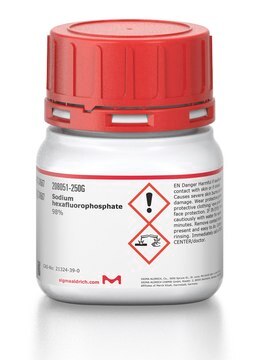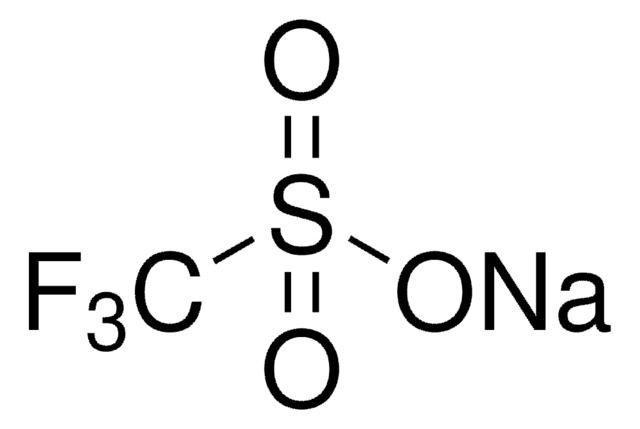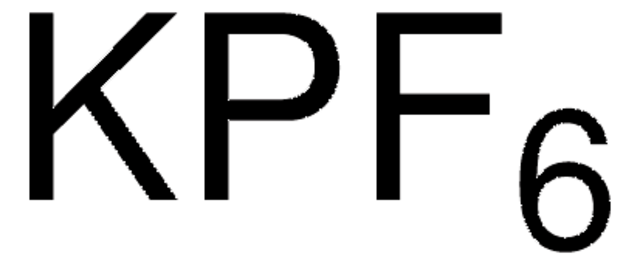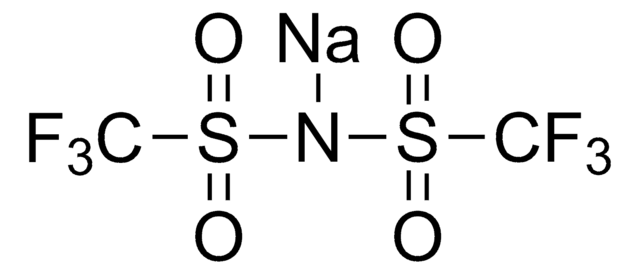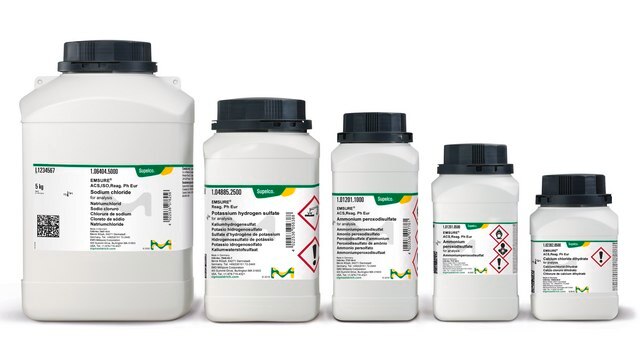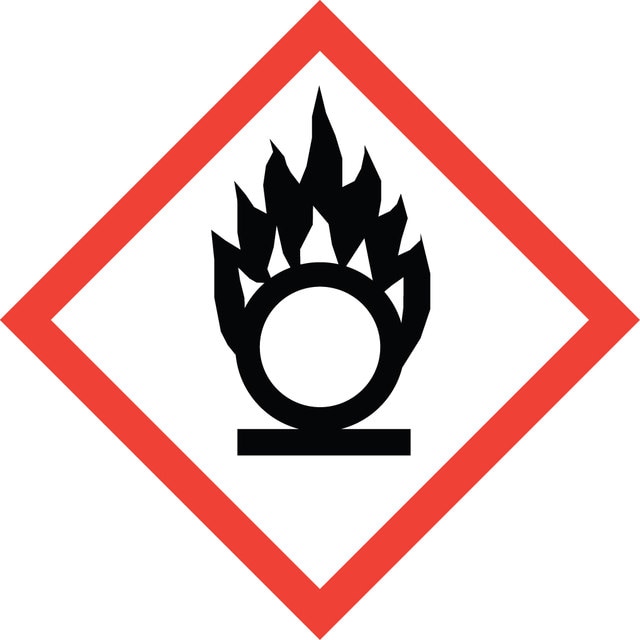931950
Sodium perchlorate
anhydrous, ≥99.9% trace metals basis
Synonym(e):
Sodium Perchlorate, Hyperchloric acid sodium salt
About This Item
Empfohlene Produkte
Qualität
anhydrous
battery grade
Qualitätsniveau
Assay
≥99.9% trace metals basis
Form
powder
Verunreinigungen
≤1000 ppm (trace metals analysis)
pH-Wert
6.0-8.0 (25 °C, 5%, aq.sol.)
mp (Schmelzpunkt)
482 °C
Löslichkeit
H2O: 209 g/dL at 15 °C
Anionenspuren
chloride (Cl-): ≤30 ppm
sulfate (SO42-): ≤20 ppm
Kationenspuren
Fe: ≤5 ppm
K: ≤500 ppm
Anwendung(en)
battery manufacturing
InChI
1S/ClHO4.Na/c2-1(3,4)5;/h(H,2,3,4,5);/q;+1/p-1
InChIKey
BAZAXWOYCMUHIX-UHFFFAOYSA-M
Suchen Sie nach ähnlichen Produkten? Aufrufen Leitfaden zum Produktvergleich
Verwandte Kategorien
Allgemeine Beschreibung
Anwendung
Verpackung
25 g in glass bottle
Signalwort
Danger
H-Sätze
Gefahreneinstufungen
Acute Tox. 4 Oral - Eye Irrit. 2 - Ox. Sol. 1 - STOT RE 2
Zielorgane
Thyroid
WGK
WGK 1
Analysenzertifikate (COA)
Suchen Sie nach Analysenzertifikate (COA), indem Sie die Lot-/Chargennummer des Produkts eingeben. Lot- und Chargennummern sind auf dem Produktetikett hinter den Wörtern ‘Lot’ oder ‘Batch’ (Lot oder Charge) zu finden.
Besitzen Sie dieses Produkt bereits?
In der Dokumentenbibliothek finden Sie die Dokumentation zu den Produkten, die Sie kürzlich erworben haben.
Unser Team von Wissenschaftlern verfügt über Erfahrung in allen Forschungsbereichen einschließlich Life Science, Materialwissenschaften, chemischer Synthese, Chromatographie, Analytik und vielen mehr..
Setzen Sie sich mit dem technischen Dienst in Verbindung.
